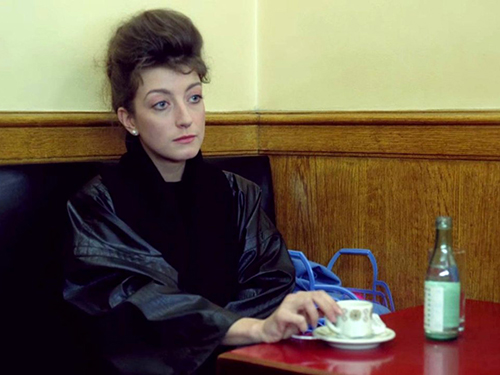
Counterpart of Love in the Afternoon from the point of view of I. (1) She likes to go out. He doesn’t. Besides, she sees that she likes to go out without him. He plays a sport she doesn’t like. She goes out with K., pretending they are a couple. But she would like not to go home. […] (2) She buys the apartment. At first, she leads the same life, even going to bed earlier and not going out more often. (3) Then she has an affair with K. […] They have sex, but afterward she can’t sleep. She dresses and goes out. (4) She walks through the streets and goes into a café. She meets a night-owl who asks her questions. […] As the sun is coming up, she goes home. (5) J. isn’t there. She waits, nervous, then goes to bed. He comes home. She tells him that he was right to do that, and that she will only love him the more. He says that he’s in love and doesn’t love her anymore.
Eric Rohmer, “Manuscript draft of a scenario”1
Claude Beylie and Alain Carbonnier: In Full Moon in Paris, when we see the deserted landscape of the banlieue, we have a feeling of sadness and depression...
Eric Rohmer: Of sadness, why? Because the heroine herself is sad, because it’s winter, because the building isn’t finished yet... When the trees have grown, it will change. I force myself to describe the feelings of a person at a given moment in time, and to find the most appropriate place to express them. For all that, I don’t include any social criticism or pamphleteering.
Would you like to live there?
That’s not the question. This architecture is going to age better than the tower blocks we built in the 1950s. The landscape you’re describing perhaps seems lonely, but from a pictorial point of view, it’s very beautiful. At first, one sees the straight lines of the station, then those large buildings in the background, then we come to the lower level buildings, with their harmony of blue and white. Perhaps it’s not very warm, but it pleases me. Aesthetically, it’s an interesting place.
But that doesn’t prevent the heroine from having only one desire, to leave and return to her Parisian cocoon, in the heart of Paris.
In the provinces, it seems people like to be open to the outside, “to have a shop front” (avoir pignon sur rue). In Paris, people shut themselves away more, although you know the world is out there, at hand.
Claude Beylie, Alain Carbonnier2
- 1Éric Rohmer, “L’Appartement, manuscript draft of a scenario,” 1981, IMEC, fonds Éric Rohmer, dossier “Les Nuits de la pleine lune, écriture de l’oeuvre” (RHM 29.1). Quoted in Antoine de Baecque, Noël Herpe, Eric Rohmer. A Biography (New York: Columbia University Press, 2014), 346.
- 2Claude Beylie, Alain Carbonnier, “Celluloid and Stone,” L’Avant-Scène du cinéma 336, January 1985, 4–10. Interview conducted in November 1984 in Paris. Reprinted by permission in: Fiona Handyside (ed.), Eric Rohmer: Interviews (Jackson: University Press of Mississippi, 2013), 77.

